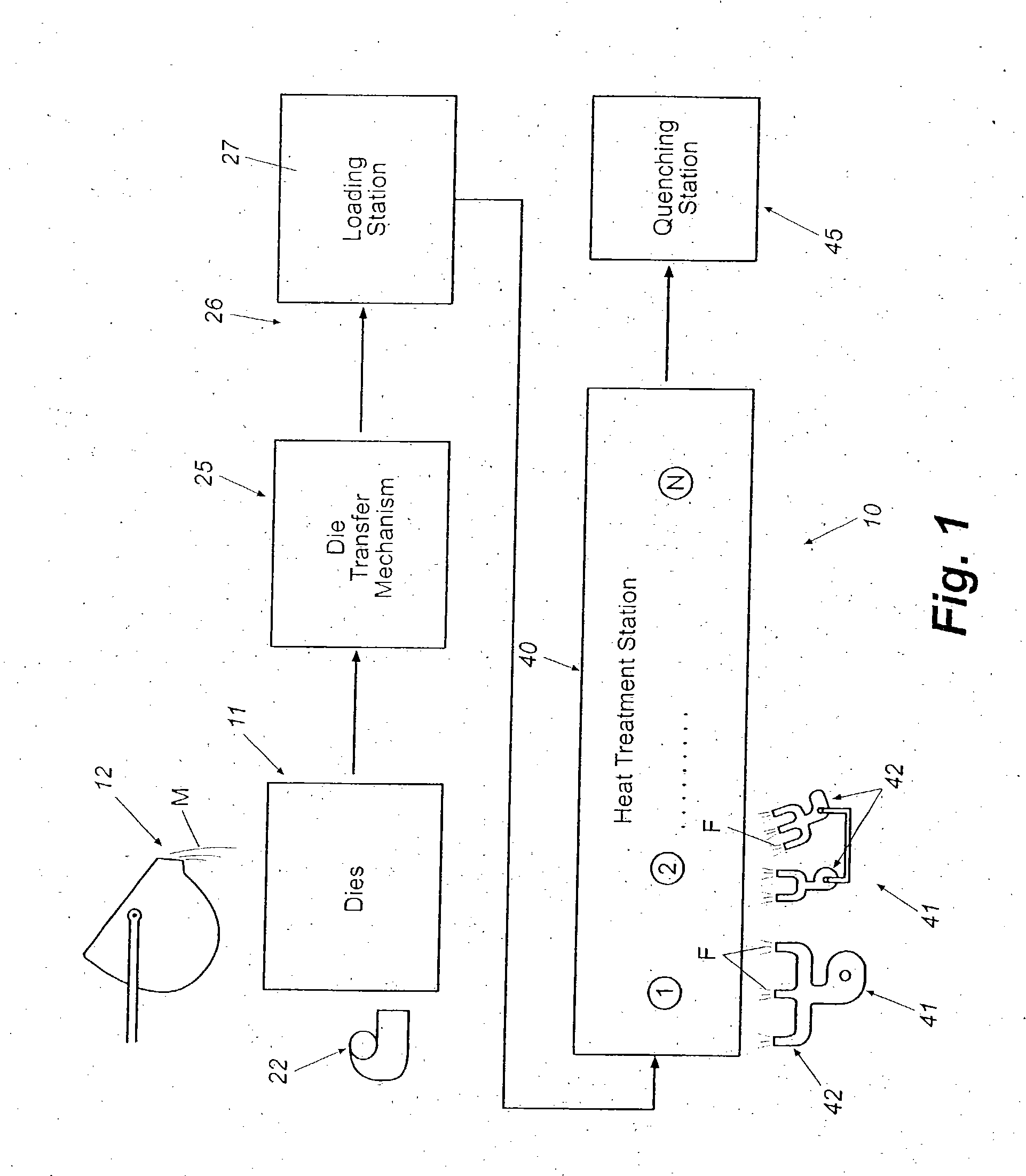Methods and apparatus for heat treatment and sand removal for castings
a technology of heat treatment and castings, applied in the field of metalurgical casting processes, can solve the problems of deformation of the core and the tendency of the binding agent to dissolv
- Summary
- Abstract
- Description
- Claims
- Application Information
AI Technical Summary
Benefits of technology
Problems solved by technology
Method used
Image
Examples
first embodiment
[0031] As indicated in FIG. 1, once the molten metal or metallic alloy has been poured into the mold and has at least partially'solidified into a casting, the mold and casting generally are removed from the pouring station 12 by a mold transfer mechanism 25, and are transferred to a loading station 26. The mold transfer mechanism can include a die transfer robot (not shown), winch or other type of conventionally known transfer mechanism for moving the molds from the pouring station to the loading station located in close proximity to the pouring station. In the invention, after the molten metal M has solidified within the mold to form the casting, the casting 13 (FIG. 3) is removed from its mold 11 prior to or at the loading station 26 (FIG. 1), such as by a robotic arm or similar mechanism, and is placed within a saddle 27 in a predefined, indexed position with its x, y, and z coordinates known. As a result, the core apertures 21 (FIG. 3) of the castings likewise are oriented or al...
embodiment 200
[0069]FIGS. 10A and 10B illustrate still a further embodiment 200 of the present invention for the enhanced heat treatment and breakdown and removal of sand cores and / or sand molds from a series of castings 201. In this embodiment, a molten metal or metal alloy M (FIG. 10A) is poured into a mold, such as a cast iron or other permanent type die or a semi-permanent or precision sand mold 202 at a pouring or casting station 203. The molds generally include an internal cavity 204 in which the molten metal is received and solidified to form the casting 201 and in which a sand core 206 typically is provided for forming ports or other interior detail for the casting. Typically, the molds in this embodiment will also include a series of ports or mold access openings 207 that extend through the side walls 208 of the molds. These ports provide an access to the interior cavity or chamber 204, and thus the casting being formed therein, for direct application of heat to the castings while “in-mo...
PUM
| Property | Measurement | Unit |
|---|---|---|
| Temperature | aaaaa | aaaaa |
| Pressure | aaaaa | aaaaa |
| Flow rate | aaaaa | aaaaa |
Abstract
Description
Claims
Application Information
 Login to View More
Login to View More - R&D
- Intellectual Property
- Life Sciences
- Materials
- Tech Scout
- Unparalleled Data Quality
- Higher Quality Content
- 60% Fewer Hallucinations
Browse by: Latest US Patents, China's latest patents, Technical Efficacy Thesaurus, Application Domain, Technology Topic, Popular Technical Reports.
© 2025 PatSnap. All rights reserved.Legal|Privacy policy|Modern Slavery Act Transparency Statement|Sitemap|About US| Contact US: help@patsnap.com



